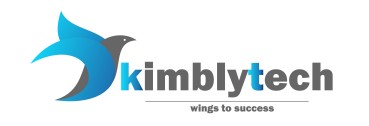What are the alternatives if JavaScript isn't the right choice for you? In this post, Matthew Davis of Future Hosting examines 5 of them and weighs the advantages and disadvantages.
Dart
Google created Dart, an object-oriented C-like language, to replace JavaScript training. It eliminates the model tradition of JavaScript, a structure for a typical accepted article, and a located technique that will be familiar to anyone who has worked with Java or C++.
Dart, in contrast to JavaScript, is a statically composed language, eliminating a common cause of errors in JavaScript code. Dart supports type deduction, therefore it is not necessary to mention the type standard each time a variable or a capacity is declared. Javascript Training in Noida
Dart's accessibility outside of the web is perhaps its most novel feature. JavaScript can be used to translate Dart code for programme execution, but it can also be applied to server-side development and standalone applications. A versatile front-end framework that can be used to create local applications for the desktop, mobile devices, and the web is Google's Flutter UI toolbox.
TypeScript
Microsoft's entry into the competition for a better JavaScript is TypeScript. Contrary to Dart, TypeScript is a superset of JavaScript rather than being a whole new language. The TypeScript compiler can order legal JavaScript, but TypeScript has a few new features that improve and update JavaScript's limitations, notably the most important one. is a framework that allows for discretion.
The lack of fixed composition in JavaScript, which limits the work the compiler may do prior to runtime, is a major cause of student frustration. As its name suggests, TypeScript is a sort of documentation that developers may use to introduce type wellbeing into the programming of online applications. Type derivation is supported by TypeScript and Dart.
It is important to note that TypeScript is better known than its Google friend. Even though Angular is a Google project, TypeScript was used to construct the system. React and Vue both support using TypeScript.
Elm
Dart and TypeScript are clearly related to JavaScript and C in the family. Elm is exceptional. It is a statically constructed, practical language that resembles Haskell more than C, but without the worry that comes with Haskell. JavaScript Training institute in Delhi
Elm is essentially a language with area-specific constructs for creating web front-closes.
Elm's creator, Evan Czaplicki, has focused on creating the best front-end, online application development experience rather than trying to be a broadly useful language like JavaScript.
The primary benefit of Elm is that it eliminates a variety of potential errors in front-end code by using static sorting and permanent characteristics. Elm advertises itself as a language with "no runtime special circumstances by and by," which implies that if an Elm programme runs using any method, it's likely not going to encounter show-stopping faults.
ClojureScript
As we continue on our trip away from languages that are similar to JavaScript, we arrive at ClojureScript, a dialect of the Clojure programming language that is similar to JavaScript. The Java Virtual Machine supports the language Clojure.
Clojure is a powerful language with permanent information types, similar to Elm. In contrast to Elm, it is a widely applicable programming language that can be used on both the front and back ends using JavaScript and the JVM.
Arizona LiveView
Together with JavaScript, we've had a look at the languages. They enable engineers to create JavaScript devoid of customer-side apps.
The Phoenix LiveView is outstanding. Phoenix is a web application created in the relatively recent programming language Elixir. Phoenix is a server-side software and a Java online training course, so why would we mention it in an article about programming JavaScript options? Because LiveView can conflict with JavaScript in a variety of web development scenarios.
Conclusion
We have looked at five different ways to create JavaScript, each of which offers a different approach to handling the creation of user-friendly online apps.
As JavaScript is currently the primary language supported by internet browsers, it is difficult to maintain a safe distance from it.
The more people who use Web Assembly, though, the more likely that is to change. Every big software supports Web Assembly, and in the future it's likely to replace other accumulation focuses as the standard for web-centered languages.


0 Comments